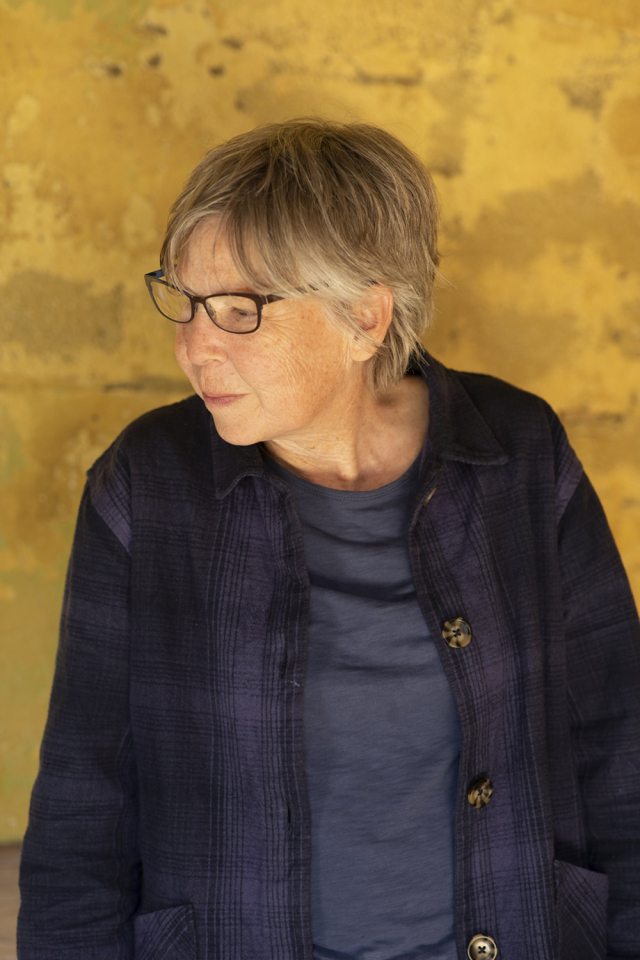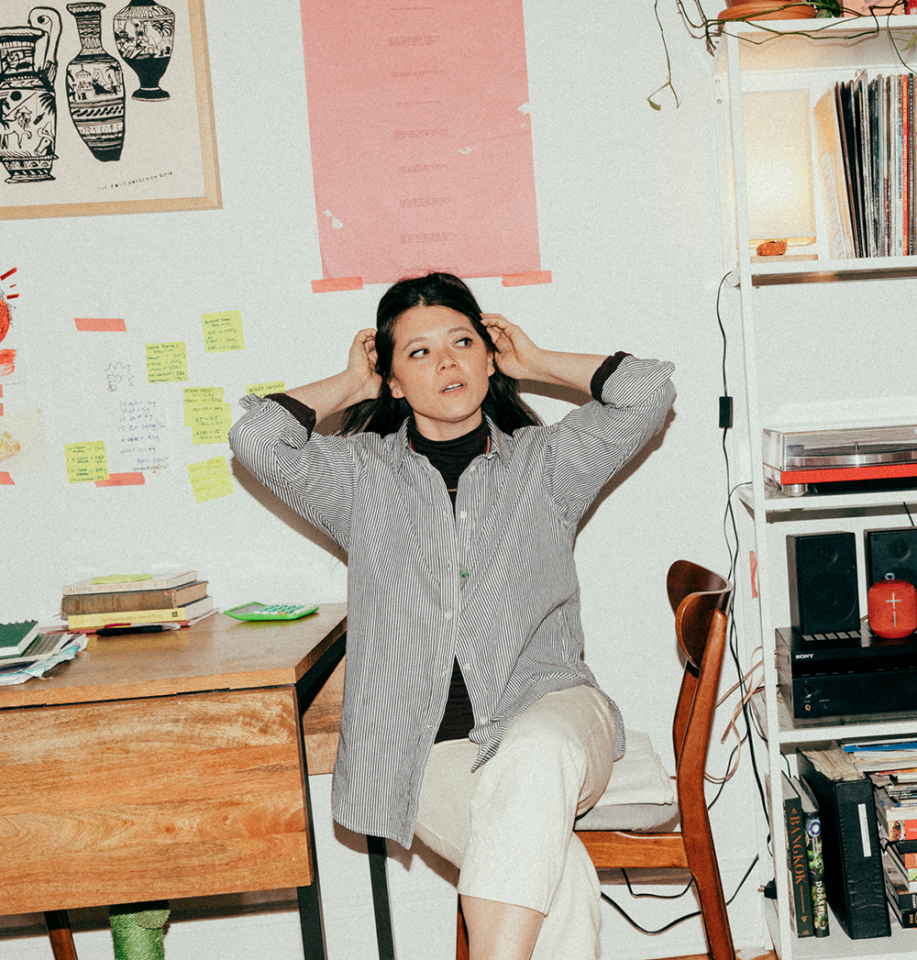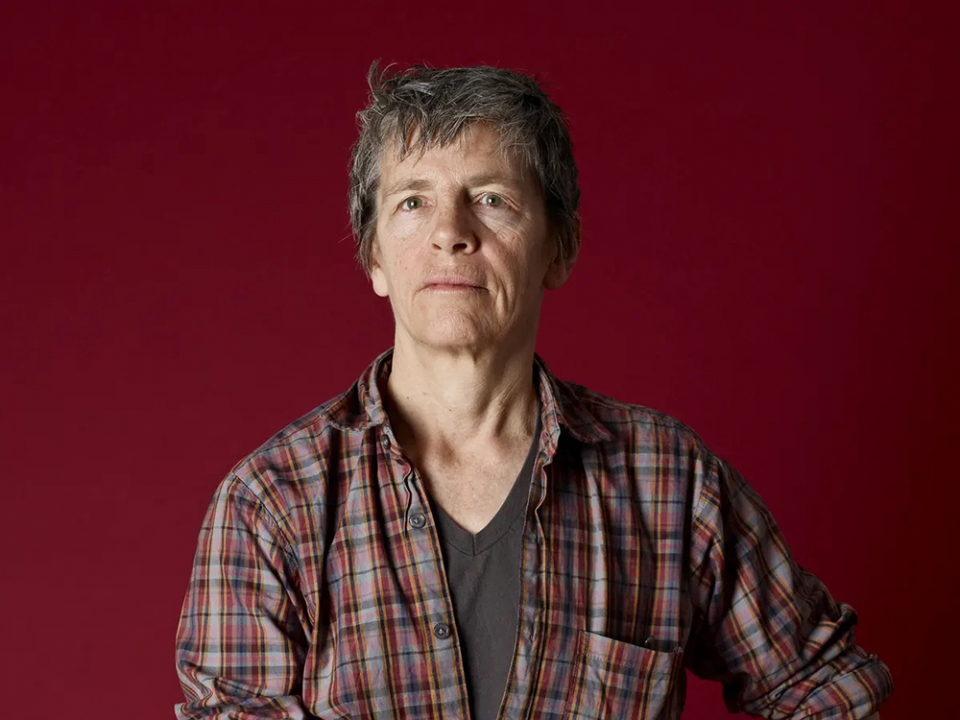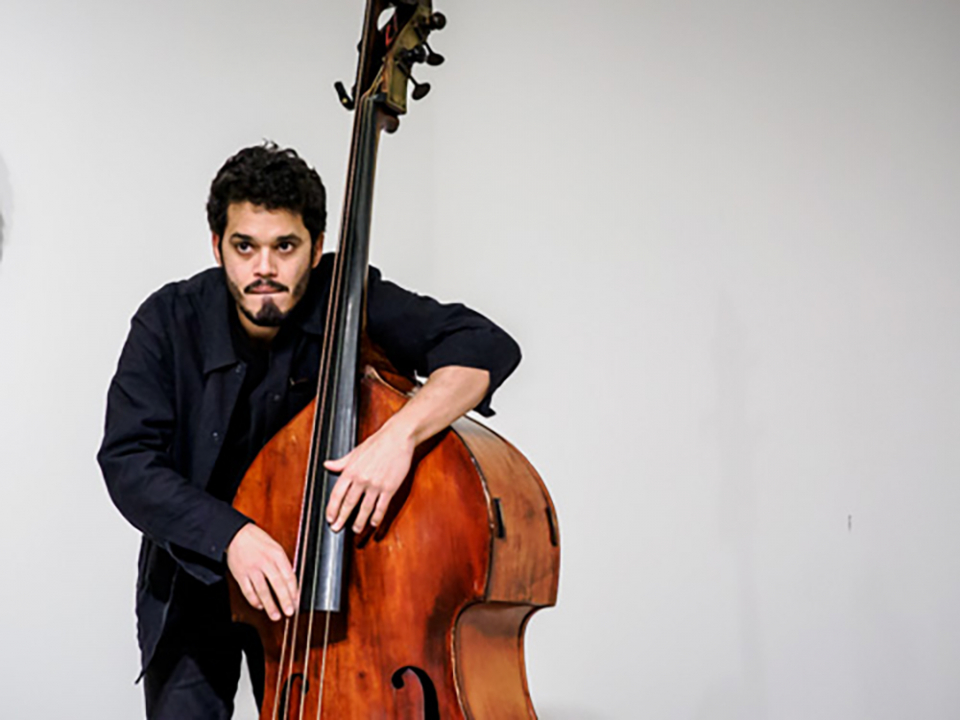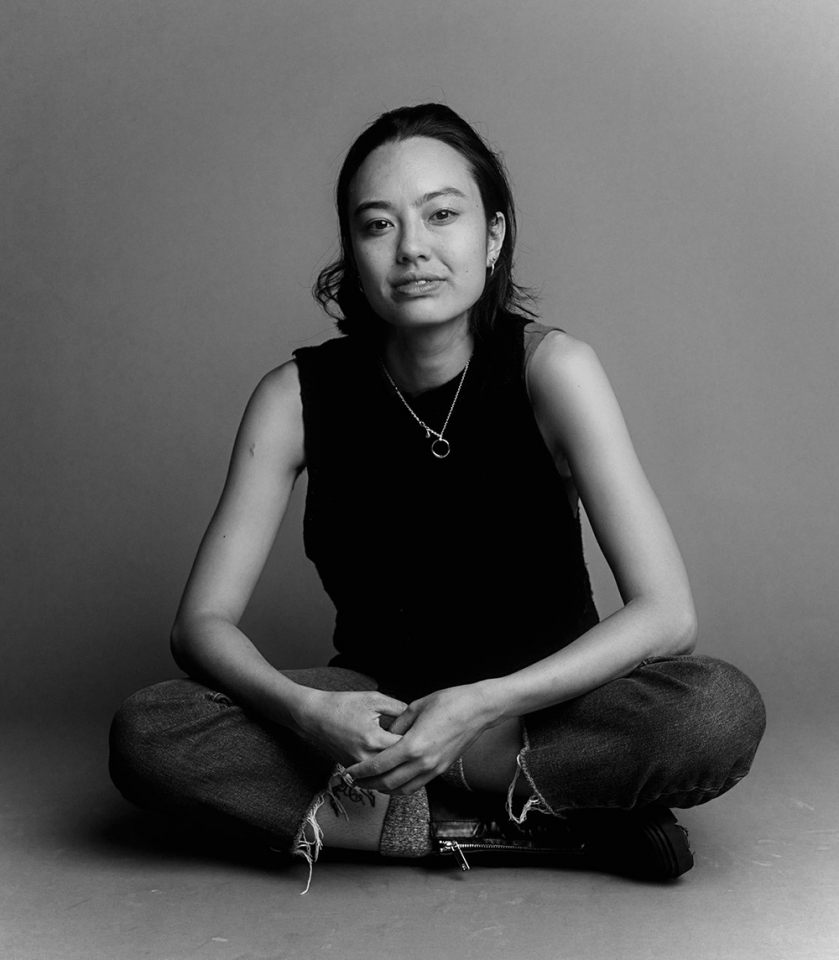Confronting the unknown is a nonnegotiable part of living. Wading into unchartered existential waters is as natural and necessary as eating, drinking, breathing. These mysteries of life take on different hues depending on our age, maturity, and security. I, for example, am being colored by the anxiety surrounding my mid-life. After the most recent issue of Sound American, I felt drained and allowed myself to give in to certain doubts. These doubts included, among other things, the future of this project. I find myself now, with apologies to St. John of the Cross, in an gently unnerving “dark night of the soul.”
The particulars of this affliction are not important, because they are not special. What I am experiencing is nothing more or less extreme than what anyone else will confront; the years ahead are shorter than those behind, and you question whether your mind has done anything for your heart, or your soul. In my case, I wonder if the headlong dash toward documentation and proliferation has cost me time with the people I care about. Your anxiety may end up being different. I hope to hear about it some day and share our experience. This desire to know what shape each person’s unknown and how it manifests in what they give the world has been a lifelong interest, and it has ended up being the central idea for SA30. I want to use this anniversary issue, selfishly, as an excuse to talk about our unavoidable self-doubt under the guise of how we work and what it means to question why we work.
This issue is made up of seven interviews roughly organized around three questions:
1 How do you like to work?
2 Are you ever unsure?
3 How do you hope your life will develop?
As one would expect, the answers differ based on the interviewee’s demeanor, way of communicating, age, and creative milieu, but some large consistencies emerge as well. And this is the point, or perhaps hope, of the exercise. Diversity is the key to survival, but consistent variation also leads to entropy. A fine balance must be maintained, and I was pleased to find that this issue contains approaches to the creative life that are heterogeneous while adhering to three basic principles or correlations. No two people here have found their way to—or managed to live—the same creative life. This initial correlation is a negative one: a shared awareness that there is no textbook for the professional artist.
The second is a simple existential truth: What we experience in our past—and how we address it—changes the way we interact with the world around us and how we shape a hopeful future. It’s a simple matter of time’s inescapable linear movement dragging our history along in a wake that somehow disrupts our future. I end each interview with a mental game of sorts by asking the subject for a prediction of their life—psychic, cultural, creative, economic—in thirty years. The question is ridiculous, but there are clues to the pervasiveness of experience in each interviewee’s answers. Someone who has not had enough time for themselves may hope for a future where they can do as they please. Another may hope for larger institutional change after feeling subject to inequities. Yet another may be completely at peace with their past and present, and so they offer the pragmatic answer that they’ll probably be dead. By posing the same question, we can begin to see how shared principles such as time and experience can produce distinct responses.
In the same vein, the reproduced act of interviewing different subjects leads to a proliferation of ideas. The third principle is how much each individual shows of themselves and their aesthetics in the way they answer such similar questions. This may be done obviously, as in the poetic tempo and rhythm of Eileen Myles’s response, or it may appear as a general wonder and positivity (Pickowicz) or a matter-of-fact demeanor (Oehlen). These are people used to communicating large ideas in a unique way, and it shows itself even in how they speak or write about their work and life.
Throughout the issue’s many interviews, (including an excerpt of the epic conversation between twentieth-century percussion icon Michael Ranta, composer Sarah Hennies, and Swiss artist and composer Vincent de Roguin) the reader can be drawn to—and subsumed in—the waves of sameness and difference that ebb and flow throughout. Large similarities make themselves visible, while each artist’s answers show a slightly different way of looking at life, art, and survival. Given my recent bout of the unknown, this is what I was hoping for: not the answer to life, but the warmth of knowing everyone experiences it. In other words, everyone is dealing with life but not all in the same way. This has been the mission of SA: to present the great and beautiful shagginess of living a life through the words of people who have made it their business to deliver their particular mess to the world in an interesting package.
Sound American began with a conversation with Lisa Kahlden, my boss, about the need for music writing that combined the contemporaneous quality of commercial music magazines with the rigor of academic research while definitively being neither. The obvious solution, to me, was to prioritize the voice of the artist as the primary, and best, source of information about music. Before I realized what I was getting myself into, Lisa had offered me the fifteen dollars a month to set up a web domain and build the online version of Sound American.
SA’s first issue went live in 2014. It was a small affair consisting of an essay on gospel music donated by novelist Rick Moody; an interview with archivist, artist, and musician Ben Hall; and a short piece of mine on the psychology of collecting. The rest of the issue was padded with music and images of gospel record covers. I designed the whole site using a Square Space-knock-off site builder before releasing it to a very small, but immediately enthusiastic, readership.
Every issue that followed represented something new. SA3: The John Cage Issue was the first to concentrate on a single musical voice, homing in on the composer’s Number Pieces and Song Books through the lens of performance practice. It downplayed the mythology around Cage and promoted the role and process of the interpreter. This became an unspoken editorial direction for later composer-portrait issues on Anthony Braxton, Éliane Radigue, and Roscoe Mitchell, among others.
SA5: The Philadelphia Issue was the journal’s first real miss, an uneven and naively researched issue that holds value as a source of information about the incredible, and still underappreciated, artists it featured. But its scattershot approach feels like an attempt to define a city by a few pages randomly torn out of a phonebook. I had been offered—and had taken—funding for this issue, and its inconsistent results informed another editorial decision to keep future issues clear of outside influences, economic or otherwise, for the sake of equanimity and quality. This decision has proved to be the most difficult and necessary as SA has grown.
Our most controversial issue remains SA8: The What Is Jazz Issue. Originally conceived as a social and linguistic experiment, I asked over fifty musicians worldwide to define the word “jazz” in a positive and negative sense: “What must be present to make music jazz?” and “What cannot be present for the music to be jazz?” The answers remain fascinating, but the response from the journal’s growing audience has been even more telling; even now, the conversation (to use a polite term) over not just the question, but its methodology, has prompted a lot of passionate opinions and, hopefully, constructive arguments.
After a few years, the journal found its way into a predictable, if not easy, rhythm. There were hits and misses as before, but the general level of quality improved (although my ability to design websites did not). SA12: The Treatise Issue marked the first time we commissioned groups of artists to record for an issue. (SA3 had many commissioned versions of Cage’s Song Books, but they were, for the most part, solo recordings without commentary.) Groups—both existing and ad hoc—were asked not only to record a pass of the same page of Cornelius Cardew’s iconic graphic score, but to leave the tape running and let the readers/listeners in on their discussions as they navigated its abstract figures. This was the first in-depth taste of the creative process featured in SA, and it has remained a touchstone in the journal’s attempt to show not only the end result of a recorded musical document, but the social and personal effort behind it.
SA16: The Anthony Braxton Issue was the first to receive real attention from outside the website’s small, but loyal, readership. Even though it contains no direct communication with its subject, the issue draws an accurate map of Braxton’s complex, modular universe, giving the reader an insight to compositional, musical, and anecdotal knowledge that had been reserved in the past only for those that played with him. Our seventeenth issue was the first to be guest curated.
A group effort by the European publishing, composition, and conceptual group, Mumei, this issue is perhaps our most daring in the laying out of abstract ideas. The decision to give over every third issue to a guest curator remains controversial, but these issues provide our readers access to voices they wouldn’t easily come across, and therefore I count it as one of the great advancements of the publication.
Sound American reached a crisis around the twenty-issue mark. I was tapped out as the sole editorial voice. The publication was hitting a writing, editing, and production wall, and I had to ask myself if it could continue in its current state as a haphazard, but decent, blog, or if I wanted to put the energy into making it something more. Was twenty the nice, round number to end on? Maybe not.
In choosing to continue, the first question to answer was how to revitalize the journal’s topics and contributors. I had exhausted my resources, and so editorial and advisory boards were assembled to help guide future issues. I am so thankful to those that signed on for the yearly meetings—for their acknowledgment of successes and for their challenges to ideas that may have gone astray. With the addition of the boards came the decision to release future issues in print as well as maintaining their presence for free on the website. Thankfully, Sound American found Mike Dyer around this time. His design help has been invaluable in making each issue its own visual event, and I consider him as much a creator of Sound American as I am at this point. His style guide was also used by Jason Loeffler to create a much better (finally) website experience.
The simultaneous production of print and online versions of the journal posed a fairly steep learning curve for me, but I am deeply proud of the ten issues that have been printed and released since then: SA24: The Sun Ra Issue was our first sell out, and the first to get broad media attention. It was also the first issue to come out during the pandemic, and its release will always be tied with the memory of sneaking into our locked office building at 6:00 am to receive the shipment and maniacally fill orders in full mask. SA25: The Folk Issue was our first guest-curated issue to sell out and remains one of our most requested items. Sarah Hennies and Anna Roberts-Gevalt put together a beautifully loose and conversational set of articles around experimental and folk traditions all while dealing with illness and the depth of COVID uncertainty.
SA26: The OCCAM Ocean Issue is the most intimate issue for me. Another pandemic project, I talked to fellow performers of Éliane Radigue’s music about their experiences and was able to share their responses with an audience that had no way to look in on such a personal and private process. It remains the issue that has gotten the closest to my initial, vague notion of what Sound American can do to demystify and humanize the creative act. And finally, our last issue, SA29: The Roscoe Mitchell Issue, came as a shock to all of us when it sold out before we had even received our much expanded print run. Knowing that so many people wanted to find out more about an American legend of improvisation, conception, and composition gives a little hope about the future of, what I think is a very special and specific, American culture.
And that’s the topic I have been avoiding: the future. The unknown in my life has spread, and I am no longer as sure of myself as I was when Sound American started; some of my bluster and confidence has been eroded by reality, and I am faced with the reality of the journal’s sustainability. Beyond the persistent questions of how to fund each issue without giving into advertisement, I have to wonder at what point the energy and focus will dip below a heretofore unseen line of diminishing returns; when does the publication cease being a project of passion and become the obligation of an increasingly cranky and unhelpful editor. Time has moved on, and I wonder if what this journal has to say is as necessary as it once was, or if it is time to cede this small amount of ground to different opinions voiced in different ways.
Sound American has done much more than I could have ever predicted. Its community—from Lisa and Mike to the boards and contributors and, of course, the readers—is the project’s treasure, and it will inform whatever the journal leaves behind when it is time to be left behind. The journal has inspired a growing number of self-published projects committed to telling different stories in different ways, and I’ve spoken with a handful of new editors and publishers to help them find printers, designers, and bookstores for their own overwhelmingly beautiful contributions to the cultural and musical conversation. But, most importantly, Sound American has remained an honest—sometimes raw and clumsily sincere—document of a people, time, and place. And it has managed it with no commercial ties and with minimal window dressing. I am proud to think that this will be the journal’s legacy when it is done.
While it is clear that it’s time for a break, this may not be the end. In a year, I will reevaluate whether there is anything new to say and if there is a way to economically support it while remaining committed to the tenets that SA are based on: 1. Talking about the complexity of being human in the simplest possible form; 2. Adhering to the elemental human right not to be advertised to (with thanks to saxophonist Josh Sinton for the idea and articulation); 3. Allowing people to take responsibility for their ideas; and 4. Highlighting the greatness contained in human creativity.
Through all my personal weakness, I find myself relying on these principles as being worthy of energy. And so, barring life, this isn’t necessarily a goodbye to Sound American. Consider it a state-of-the-journal address. A particularly stormy one, perhaps, but sincere. I want to thank you all for your continued support, whether that is economically through your purchase of individual issues and subscriptions, editorially through your thoughtful critiques, or emotionally through kind words issued in person or via email. I am apprehensive about a lot of things, but the quality SA’s readership has never been one of them. Our shared future will spawn a lot of wonderful conversations, a few beneficial arguments, and hopefully a spread of the ideals and commitments of this music journal into an unknown future

